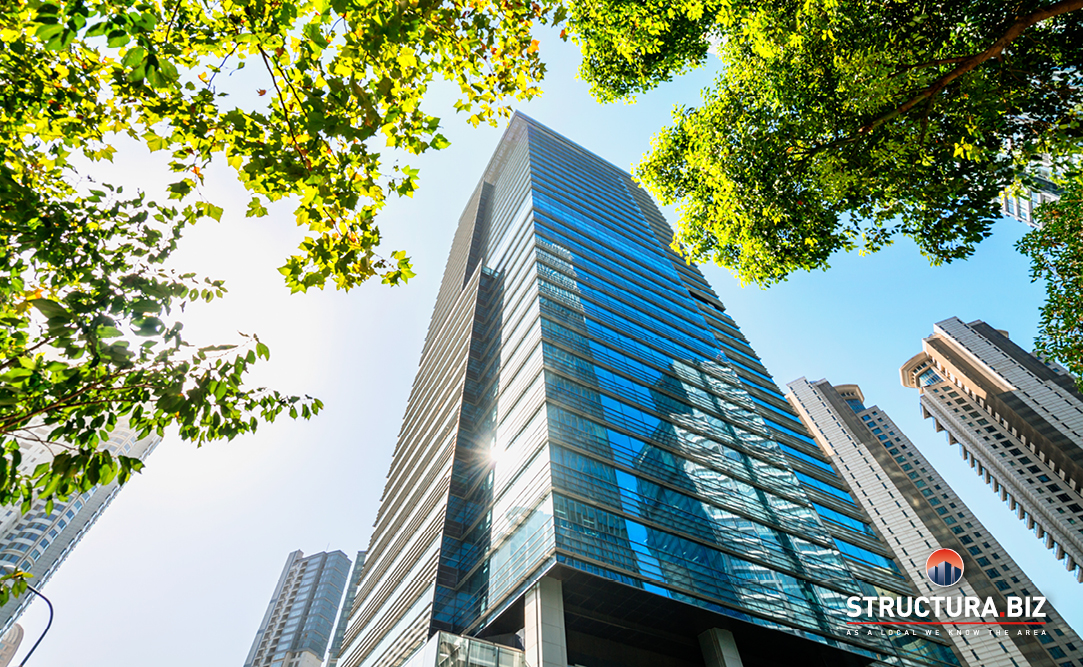Interested?
02 462 32 00office@structura.biz

The Finance Tower
At the beginning of this year, the Finance Tower in Brussels made headlines as it was sold for a record price of more than 1.2 billion euros. The building had already been sold in 2001 as part of a sale and lease-back operation by the Belgian government for 311 million euros. Taking into account the renovation costs of 325 million euros, the investor managed to realize a very interesting profit in less than 20 years. This gave rise to a discussion on whether the sale and lease back transaction that took place at the time made sense or not. In this article, we will discuss the elements that make a sale and lease-back transaction a "win-win" deal.
Sale and lease-back
A sale-and-lease-back operation means that an owner sells his building to a third party in order to continue occupying it as a tenant. As a result of this operation, the seller increases his liquidity and partially or fully settles the debts related to the property. From that moment on, the seller will have to pay rent to the new owner. He also transfers the responsibility of the structural maintenance of the building to the new owner.
When should companies consider a sale and lease back?
Many companies have been experiencing difficult times these past few months, or sadly will be in the coming ones. Some companies have been forced to dip into their financial reserves and are finding it more difficult to obtain funding from banks. A sale-and-lease-back operation can provide some breathing space.
Not only companies facing difficulties, but also those that have experienced growth and who lack the liquidity to sustain their growth, sometimes opt for a sale & lease-back. With such an operation, they are able to optimize their financial situation.
The sale price of the asset will depend on a number of factors:
The state of the building
Obviously, the state of the building will have an influence. If the building is well-maintained, the new owner will have to invest less in it. As a result, the selling price will be higher.
The construction year of the building also has a significant influence. This is because some elements of a building have a limited life span. Typical examples are the roof, heating and air-conditioning systems. The newer these elements are, the less risk there is of (high) short-term expenses for the investor.
The rental price
In the case of a sale & lease-back, the seller can determine the amount of rent he is willing to pay. The more rent the seller (and thus the future tenant) wishes to pay annually, the higher the selling price will be. However, there are limits to this rule: a rent well above the market price is not always considered attractive to investors, because it reduces the chances of a renewal at the end of the lease. It is therefore important that the rent does not deviate too far from a market level, otherwise some investors might drop out.
Duration
Investors are often risk-averse. The greatest risk for an investor in commercial real estate is vacancy. The longer a tenant engages in a lease, the more certain an investor is of his income. Many investors are therefore willing to accept a lower yield in exchange for the warranty of their revenues. Generally, it can be assumed that if the seller/tenant commits for a long period of time, the selling price will be higher.
Investors often prefer to work with tenants who commit for a period of 6 to 12 years. Then again, a lease of longer than 12 years will be less attractive to investors. This does not allow them to make certain investments that are necessary to ensure that the building complies with new regulations (e.g. insulation). However, this usually doesn't apply for single-tenant buildings.
Yield
Once the rent is fixed, the selling price is determined in function of the desired return on investment. The ratio between the rent (an income for the investor) and the selling price (an expense for the investor) is called the yield. An investor will, of course, always strive for the highest possible yield. A seller, on the other hand, wants to obtain the highest possible selling price in relation to the rent he will be paying, and therefore wants to keep the yield as low as possible. The effective yield of a building is determined by supply and demand for similar buildings in the area. A local real estate expert knows which market yields are applied in a specific region.
Summary
It’s clear that there are several elements that need to be taken into account in order to determine whether a sale & lease-back could be interesting for a company. Do you wonder if a sale-and-lease-back is the right strategy for your company? Or are you looking for an investment in a building that is leased on a long-term basis? Do not hesitate to contact us, our teams will be glad to answer all of your questions.